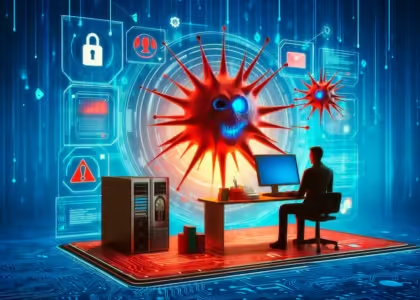Technology has revolutionized countless aspects of modern life, and education is no exception. While many advocate for the integration of technology in classrooms, there are significant drawbacks of technology in education that warrant careful consideration. This blog post delves into seven major drawbacks of technology in education, offering insights into the challenges that educators, students, and parents should be aware of.
Table of Contents
Over-Reliance on Digital Devices

One of the most concerning drawbacks of technology in education is the over-reliance on digital devices.
Potential Issues:
Distraction: Students can become easily distracted by non-educational content, such as social media and games, leading to reduced focus on academic tasks.
Dependency: An excessive dependence on devices can hinder students’ ability to engage in critical thinking and problem-solving skills without technological assistance.
Impact:
This over-reliance can negatively impact students’ attention spans and their ability to perform tasks that do not involve technology. The drawbacks of technology in education related to dependency on devices can undermine the development of essential cognitive skills.
Digital Divide and Inequality
The digital divide represents a significant drawback of technology in education, exacerbating educational inequality.
Potential Issues:
This disparity can create a gap between students from different socioeconomic backgrounds.
Resource Disparities: Schools in underfunded areas may struggle to provide adequate technological resources, further widening the educational divide.
Impact:
This inequality in access can hinder educational opportunities for students from less privileged backgrounds, reinforcing existing disparities rather than bridging them. Addressing the drawbacks of technology in education requires efforts to ensure equitable access to digital resources.
More Information Click Here
Privacy and Security Concerns
Privacy and security concerns are prominent drawbacks of technology in education that cannot be overlooked.
Potential Issues:
Data Breaches: Educational technology often involves the collection and storage of student data, which can be vulnerable to breaches and unauthorized access.
Online Safety: Students may encounter risks such as cyberbullying, inappropriate content, and online predators if proper safeguards are not in place.
Impact:
The risk of data breaches and online safety issues can compromise the confidentiality and security of students’ personal information. Schools and educators must be vigilant about implementing robust security measures to mitigate these risks.
Reduced Face-to-Face Interaction

Another drawback of technology in education is the reduction in face-to-face interaction among students and between students and teachers.
Potential Issues:
Decreased Social Skills: Limited face-to-face interaction can affect students’ social and communication skills, as they may have fewer opportunities for direct, personal exchanges.
Teacher-Student Relationships: Technology-mediated communication can sometimes lead to weaker relationships between teachers and students, impacting the overall learning experience.
Impact:
The reduction in face-to-face interaction can affect students’ ability to develop interpersonal skills and build strong, supportive relationships with their educators. Addressing this drawback involves finding a balance between digital and in-person learning experiences.
Increased Screen Time and Health Concerns
Extended use of technology in education often leads to increased screen time, which raises several health concerns.
Potential Issues:
Physical Health: Prolonged screen time can contribute to issues such as eye strain, poor posture, and repetitive strain injuries.
Mental Health: Excessive use of technology has been linked to increased levels of anxiety, depression, and sleep disturbances among students.
Impact:
The health concerns associated with increased screen time can affect students’ overall well-being and academic performance. Educators and parents must be aware of these potential issues and promote healthy technology usage habits.
More Information Click Here
Potential for Academic Dishonesty
The potential for academic dishonesty is a notable drawback of technology in education.
Potential Issues:
Cheating: Technology can make it easier for students to cheat on assignments and exams, using resources such as online answer keys or plagiarism detection tools.
Lack of Originality: The ease of accessing information online can sometimes lead to a reliance on copied content rather than original thought and analysis.
Impact:
Academic dishonesty undermines the integrity of the educational process and can affect students’ long-term learning outcomes. Schools must implement effective strategies to address and prevent cheating in a digital age.
Technological Distractions and Engagement Issues
Technological distractions are a significant drawback of technology in education, impacting student engagement and focus.
Potential Issues:
Multitasking: Students may engage in multitasking, such as using social media or chatting online while studying, which can reduce their overall engagement with educational content.
Attention Span: Frequent exposure to fast-paced digital content can shorten students’ attention spans, making it harder for them to concentrate on longer, more complex tasks.
Impact:
Technological distractions can decrease students’ ability to stay focused and fully engage with educational material. Addressing this issue requires implementing strategies to minimize distractions and encourage focused learning.
Addressing the Drawbacks of Technology in Education
While there are notable drawbacks of technology in education, there are also strategies to mitigate these issues and enhance the benefits of digital tools:
- Promoting Balanced Use
Encourage balanced use of technology by setting limits on screen time and incorporating breaks to reduce health risks and distractions. - Ensuring Equitable Access
Work towards ensuring equitable access to technology for all students by providing necessary resources and addressing the digital divide. - Strengthening Privacy and Security
Implement robust security measures and educate students about online safety to protect their privacy and security. - Fostering Face-to-Face Interaction
Incorporate opportunities for face-to-face interaction and build strong teacher-student relationships to maintain social and communication skills.
Conclusion
While technology in education offers numerous advantages, it is essential to be mindful of its drawbacks. By understanding and addressing the drawbacks of technology in education, such as over-reliance on digital devices, privacy concerns, and increased screen time, educators, students, and parents can work together to create a more balanced and effective learning environment. Caution and proactive management of these challenges will help maximize the benefits of educational technology while minimizing its potential negative impacts.
FAQ:
Drawbacks of Technology in Education
As technology continues to make significant inroads into education, it’s essential to understand both its benefits and drawbacks. This FAQ aims to address common questions about the drawbacks of technology in education, providing comprehensive answers to help educators, parents, and students navigate the challenges and implications of integrating technology into learning environments.
What are the primary drawbacks of technology in education?
Answer:

The primary drawbacks of technology in education include:
Decreased Face-to-Face Interaction: Technology often leads to less in-person interaction, which can affect social skills and communication.
Reduced Critical Thinking Skills: Easy access to information online might discourage deep, reflective thinking and problem-solving.
Increased Distraction: Digital devices can be a source of distractions, affecting students’ focus and productivity.
Inequality in Access: Not all students have equal access to technology, leading to educational disparities.
Overreliance on Technology: Excessive use of digital tools can lead to the erosion of fundamental skills, like handwriting and mental arithmetic.
Privacy and Security Concerns: The use of technology raises issues related to data privacy and security breaches.
Potential for Widening Achievement Gaps: Technological disparities can exacerbate existing academic challenges, widening the achievement gap.
How does decreased face-to-face interaction impact students?
Answer:
Decreased face-to-face interaction can impact students in several ways:
Weaker Social Skills: Limited in-person interactions can lead to difficulties in developing and practicing essential social skills, such as empathy, teamwork, and conflict resolution.
Reduced Collaboration: Students may miss out on collaborative learning experiences that occur more naturally in physical classrooms.
Decreased Engagement: Physical presence often enhances engagement and motivation, which may be less effective in virtual settings.
In what ways can technology reduce critical thinking skills?
Answer:
Technology can reduce critical thinking skills by:
Encouraging Surface Learning: Students might focus on memorizing information rather than understanding concepts deeply.
Promoting Quick Answers: The ease of finding answers online can discourage students from engaging in problem-solving and analytical thinking.
Reducing Reflection: Instant access to information may lead to less time spent reflecting on and questioning the material.
What are the sources of distraction associated with technology in education?
Answer:
Sources of distraction associated with technology include:
Social Media: Platforms like Facebook, Instagram, and Twitter can divert students’ attention from academic tasks.
Games and Apps: Educational games and non-educational apps can be tempting distractions during study time.
Notifications: Constant notifications from email, messaging apps, and other digital sources can interrupt focus and concentration.
How does technology create inequality in educational access?
Answer:
Technology creates inequality in educational access through:
Digital Divide: Students from lower socioeconomic backgrounds may lack access to computers, tablets, or high-speed internet.
Resource Disparities: Schools in affluent areas might have more advanced technology and resources compared to those in underfunded districts.
Lack of Support: Students who do not have technological support at home may struggle to complete assignments and engage with digital learning tools.
What are the risks associated with overreliance on technology?
Answer:
The risks associated with overreliance on technology include:
Skill Erosion: Essential skills such as handwriting, mental math, and basic research techniques may deteriorate if students rely too heavily on digital tools.
Reduced Cognitive Engagement: Overuse of technology can lead to a decrease in cognitive effort and intellectual engagement.
Dependency Issues: Students might become overly dependent on technology, potentially impairing their ability to solve problems without digital assistance.
How can privacy and security concerns affect students?
Answer:
Privacy and security concerns can affect students in the following ways:
Data Breaches: Personal and academic information stored online is vulnerable to theft or misuse if proper security measures are not in place.
Unauthorized Access: Educational technologies might expose students to risks if their data is accessed by unauthorized parties.
Privacy Violations: The collection and management of students’ data can raise concerns about how their information is used and protected.
What is the potential impact of technology on the achievement gap?
Answer:
The potential impact of technology on the achievement gap includes:
Widened Disparities: Students with limited access to technology may fall further behind their peers who have better resources.
Uneven Learning Opportunities: Disparities in digital literacy and access to technology can create unequal learning experiences.
Increased Challenges for Struggling Students: Students who already face academic challenges may find it more difficult to succeed if they lack technological support.
How can educators mitigate the drawbacks of technology in education?
Answer:
Educators can mitigate the drawbacks of technology by:
Balancing Tech Use: Integrate technology in a way that complements traditional teaching methods rather than replacing them.
Promoting Digital Literacy: Teach students how to use technology responsibly and critically, including how to evaluate online information.
Encouraging Face-to-Face Interaction: Design activities that require in-person collaboration and communication.
Addressing Inequality: Advocate for and implement policies that ensure all students have access to necessary technology and resources.
Ensuring Data Privacy: Implement strong security measures to protect students’ personal information and comply with privacy regulations.
What role do parents play in addressing the drawbacks of technology in education?
Answer:
Parents can play a significant role in addressing the drawbacks of technology by:
Setting Limits: Establishing rules and limits on screen time to ensure a balanced approach to technology use.
Supporting Learning: Providing access to technology and educational resources, and supporting their child’s learning needs.
Encouraging Critical Thinking: Encouraging children to engage in reflective thinking and problem-solving rather than seeking quick answers.
Monitoring Usage: Keeping track of their child’s technology use to prevent distractions and ensure appropriate online behavior.
Promoting Privacy Awareness: Educating children about online privacy and the importance of safeguarding personal information.
What are some best practices for integrating technology in the classroom?
Answer:
Blended Learning: Combine traditional teaching methods with digital tools to create a balanced and effective learning environment.
Interactive Tools: Use interactive technology, such as smartboards and educational apps, to enhance engagement and participation.
Professional Development: Provide ongoing training for educators to stay updated on the latest technologies and effective teaching strategies.
Student-Centered Approach: Tailor technology use to meet the individual needs and learning styles of students.
Regular Evaluation: Continuously assess the effectiveness of technology integration and make adjustments based on feedback and outcomes.
How can schools address the digital divide?
Answer:
Schools can address the digital divide by:
Providing Resources: Ensuring that all students have access to necessary technology, including laptops and internet connectivity.
Offering Training: Providing training for students and families on how to use technology effectively and responsibly.
Securing Funding: Seeking grants and other funding sources to support the acquisition of technology and resources for underserved communities.
Creating Partnerships: Collaborating with community organizations and businesses to support technology access and education.
What are the long-term implications of technology on educational outcomes?
Answer:
The long-term implications of technology on educational outcomes can include:
Enhanced Learning Opportunities: Technology can provide access to a wide range of educational resources and learning experiences.
Skill Development: The use of technology can help students develop valuable digital skills that are essential in the modern workforce.
Changing Educational Practices: Technology may lead to new teaching methods and educational practices, influencing how education is delivered and experienced.
Potential for New Disparities: If not managed effectively, technology could exacerbate existing educational disparities and create new challenges.
How can schools ensure that technology is used ethically and responsibly?
Answer:
Schools can ensure ethical and responsible use of technology by:
Implementing Policies: Establishing clear policies and guidelines for the use of technology in the classroom and at home.
Promoting Digital Citizenship: Educating students about responsible online behavior, including respect, safety, and ethical use of information.
Ensuring Transparency: Being transparent about how student data is collected, used, and protected.
Engaging Stakeholders: Involving students, parents, and educators in discussions about technology use and its implications.
What are some examples of successful technology integration in education?
Answer:
Flipped Classrooms: Students access lecture materials online and use class time for interactive activities and discussions.
Personalized Learning: Technology tools that adapt to individual learning styles and needs, providing customized educational experiences.
Virtual Reality (VR): Using VR to create immersive learning experiences, such as virtual field trips or simulations of complex concepts.
Collaborative Platforms: Tools like Google Classroom and Microsoft Teams that facilitate collaboration and communication among students and teachers.
What are the challenges associated with maintaining and updating educational technology?
Answer:
Challenges associated with maintaining and updating educational technology include:
Cost: The financial burden of purchasing, maintaining, and updating technology can be significant for schools.
Technical Support: Ensuring that there is adequate technical support to address issues and maintain systems.
**Rapid Technological Change






